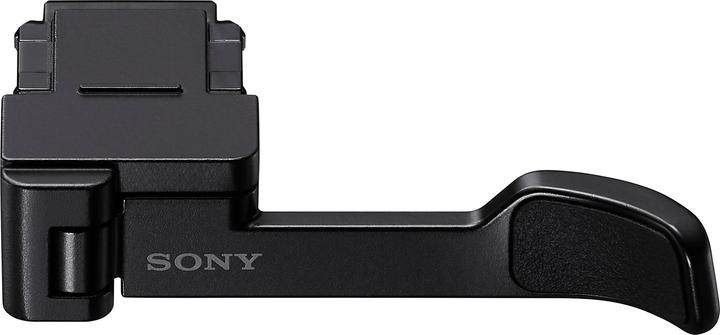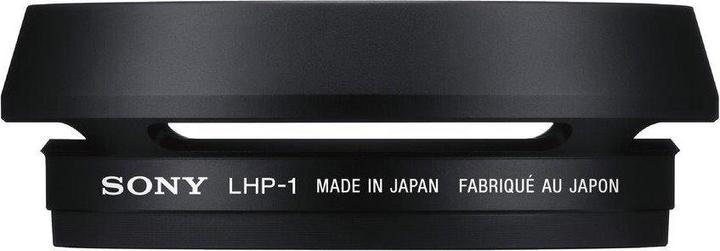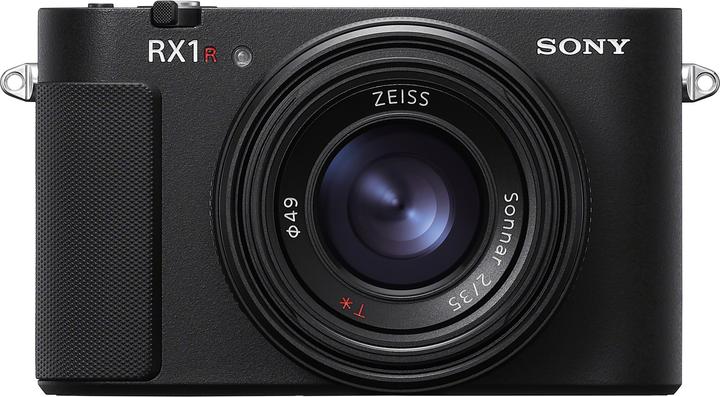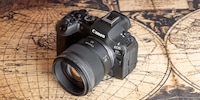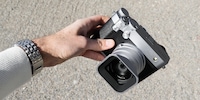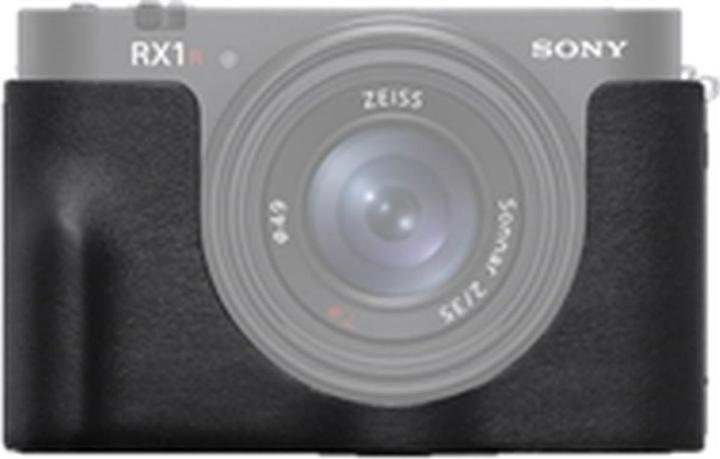

Sony RX1R III review: great for a select few
When I set out to review the Sony RX1R III, I was highly sceptical. Despite its heftier price tag, the camera has fewer features than its internal competitor. One week into my review, I’m keen to hang on to the RX1R III after all.
On paper, Sony’s new luxury compact camera, complete with full-frame sensor, sounds like a bad joke. The RX1R III features pretty much the same technology as the Alpha 7C R. The only difference is that it’s lacking image stabilisation and has a fixed, fairly old lens. Despite this, it’s still more expensive than its rival, fetching a price of 4,199 francs or 4,900 euros. Why? Because Sony’s shamelessly exploiting its target group’s purchasing power.
This considered, I should hate the RX1R III. However, after a week of putting the camera through its paces in Ticino, I’ve fallen in love with it despite its shortcomings.
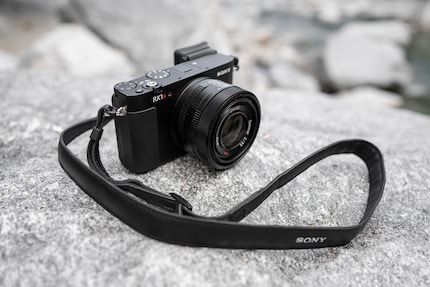
Design and controls: compactness is key
The Sony RX1R III’s identity revolves around its size. It’s tiny. And lightweight. Tipping the scales at 498 grammes, it’s significantly lighter than the Alpha 7C R with the FE 35mm f/1.8 (weighing a total of 795 g). It’s also lighter than the Leica Q3 (743 g) and the Fujifilm GFX100RF (735 g).
Those 250 grammes don’t sound like much, but if you ask me, it influences whether you’d rather hang the camera around your neck or put it in your pocket. The RX1R III feels completely different to the Alpha 7C R. It’s a genuine grab-and-go camera. A Fujifilm X100VI on steroids.
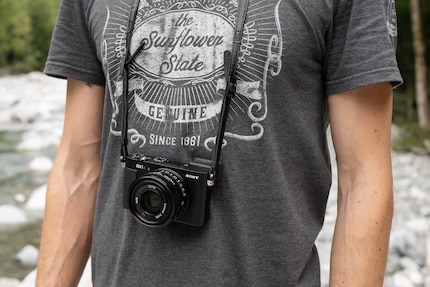
The body of the camera has a matt surface and is almost completely flat. Coming from the same Japanese factory as Sony’s G-Master lenses, it feels brilliantly crafted. The rubber on the right-hand side provides a little grip. Although this does the job for such a small camera, I’d appreciate having a moulded grip for my fingers. My thumb’s also floundering on the back. Unfortunately, the camera isn’t protected against dust and water.
Sony sells accessories that provide better grip, namely a leatherette case (150 francs/179 euros) and a metal thumb grip (240 francs/279 euros). You can also buy a lens hood (169 francs/200 euros) separately. Now, with all due respect to your bottom line, Sony, these prices are just brazen. Such an expensive camera should come with a lens hood at the very least.
Since the camera has a small body, it can’t accommodate as many control buttons as a larger Sony model. Personally, I don’t think that’s a big deal. I managed to access all the key functions using the buttons, and found my way around the menu easily. The buttons’ pressure points are slightly spongy, as is so often the case with Sony’s small cameras. Other manufacturers have the edge in that respect.
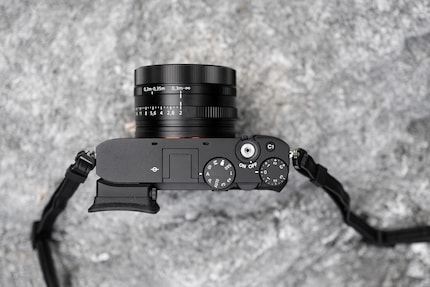
Having to manually set the aperture on the lens is unusual; the ring doesn’t have an «A» position, which would otherwise allow you to set it digitally using the dial. After a couple of hours of shooting, however, the fiddling no longer bothers me. The second ring on the lens is for switching the focus range between macro (0.2–0.35 m) and normal (0.35 m–infinity). Both rings have a lot of resistance, so I never end up changing them accidentally.
Features and displays: painful constraints
The camera’s focus on compactness has its downsides. Firstly, the Sony RX1R III doesn’t have an image stabiliser. When I’m out taking photos during the day, this doesn’t really bother me. On a cloudy day in the forest, I have to increase the ISO a little in order to keep my handheld shots sharp. However, the sensor’s so good that there’s barely any decline in image quality up to ISO 800.
On the flipside, when dusk sets in, not having a stabiliser is very limiting. I have to increase the ISO to 4,000 to get a shutter speed of 1/60 second. And even then, the photos sometimes blur. If I switch to the Alpha 7C R with its stabilised sensor, I can shoot the same scene at a cool ISO 400 and 1/10 second. Plus, the photos all turn out sharp and much less noisy.
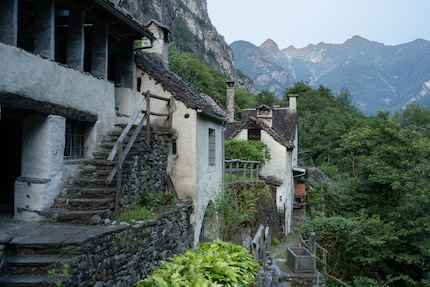
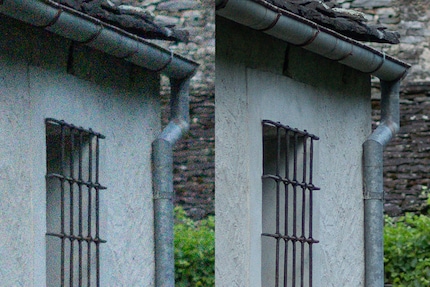
The second major limiting factor concerns the displays. To save space, Sony has given the RX1R III the same electronic viewfinder as the Alpha 7C R. In other words, a fairly small, fairly poor one. It only achieves a magnification of 0.7x and a resolution of 2.36 million pixels (1024 × 768 pixels). The rubber eyecup is larger than ones on other Sony cameras, which is a huge pain if you wear glasses like me. Because of the distance between my eye and the display, I can only see about half of the picture.
That’s why I mostly take photos using the three-inch LCD on the back. It’s nice and bright, with 2.36 million pixels. That’s a decent number, and appears sharp as a result of the considerable viewing distance. Mind you, there’s also a problem with the display. Unlike that of the previous model, it’s completely fixed, so can’t be folded out. I don’t understand that design decision. Adding a hinge would’ve been more than worth the extra size and weight.
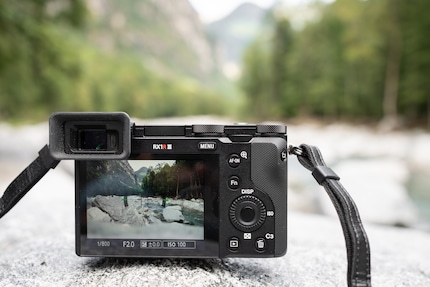
The third and least egregious of the camera’s limitations is its battery. The NP-FW50 comes from Sony’s APS-C cameras. Since the battery has to power a full-frame sensor in those models, the CIPA rating says it’ll only do for 300 images with the LCD and 270 with the viewfinder. Even so, this is a significant improvement over the RX1R II (220 with LCD, 200 with viewfinder). When I test the camera, I only just manage to get through the day with one battery. I always have a second one handy just in case.
Autofocus and speed: fast and quiet
When the Sony RX1R III launched, I doubted the old Zeiss lens would be able to keep up with contemporary autofocus systems. My concerns turned out to be unfounded. The camera focuses faster than all of its competitors, even feeling faster than the Alpha 7C R with the FE 35mm f/1.8. Featuring the latest algorithms, Sony’s AI chip recognises people, faces and eyes extremely reliably. The object-tracking feature’s also excellent.
One difference between the RX1R III and system cameras with interchangeable lenses is its shutter system. Instead of having a focal plane shutter in front of the sensor, the camera has a central shutter in the lens. I can hardly hear it, which is handy if you want to be invisible while taking photos. You can also synchronise flashes up to the maximum shutter speed.
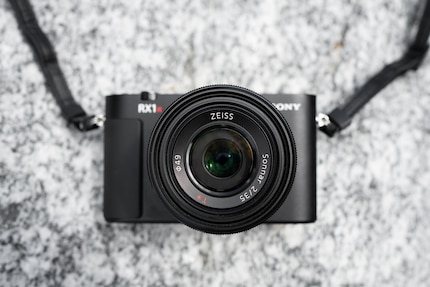
The disadvantage of the central shutter? At f/2, the fastest shutter speed is 1/2000 second. This isn’t enough with native sensitivity (ISO 100) when the sun’s shining. You either have to switch to the electronic shutter or stop down. At f/4, the central shutter achieves 1/3200 second, at f/5.6 a maximum of 1/4000 second.
Image quality: fantastic for a camera of this size
The camera’s kitted out with the same sensor that’s in the Sony Alpha 7R V, the Sony Alpha 7C R and the Leica Q3. Three years after its debut, it’s still one of the best for photos, with a high resolution, wide dynamic range and good noise performance.
The many megapixels make way for a digital zoom. At the touch of a button, you can choose between three virtual focal lengths. JPGs are saved cropped. Although the camera always captures RAW images in full resolution, the files are automatically displayed cropped in Lightroom:
- 35 mm (1.0 ×): 60.2 megapixels
- 50 mm (1.4 ×): 29.4 megapixels
- 70 mm (2.0 ×): 15.1 megapixels
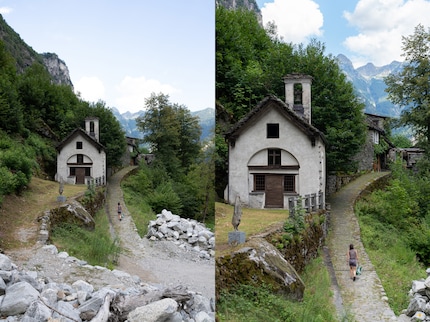
The Zeiss lens doesn’t always keep up with the sensor’s resolution. In the centre of the image, the lens delivers sharp results even at open aperture. I have to look really closely to see the difference between it and the Alpha 7C R with an FE 35mm f/1.4 GM. At the edge of the image, however, the difference is obvious – even when I stop down the RX1R III to f/8. I also notice pronounced barrel distortion. Although this can be digitally corrected, it reduces sharpness in the corners even further.
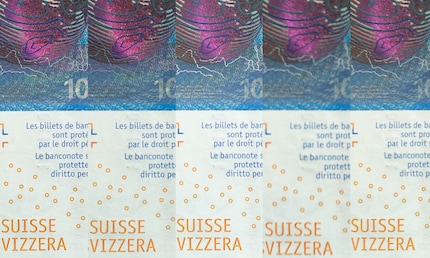
Apologists like to refer to the lens’s not-quite-cutting-edge performance as «character». If you ask me, that’s marketing gibberish. Even so, it’s good enough for me to be satisfied (excluding the test shots).
The camera does have a video feature, but given the fixed display and lack of image stabilisation, it’s unlikely anyone will use it. Moving images are limited to 4K at 30 fps. At higher resolutions or frame rates, the camera’s small body would probably overheat too quickly.
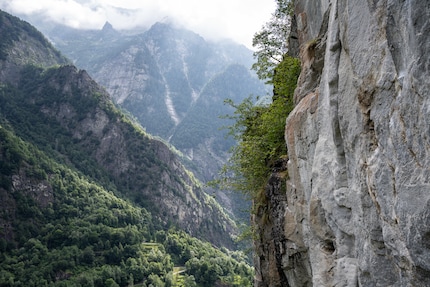
Concept and competition under the microscope
Despite all its limiting factors, a week into my review, I find myself liking the Sony RX1R III better than I expected. In my opinion, it achieves something no other camera does. It’s small enough for me to want to take it on outings when photos aren’t the main focus. At the same time, it takes markedly better pictures than a smartphone.
How does it compare with other models?
- The Sony Alpha 7C R costs less, has the same sensor, an image stabiliser, a rotatable display, a larger battery, a hand grip and no fixed lens. If photography is your main focus, it’s undoubtedly the better camera. The thing is, it doesn’t feel nearly as portable.
- The Leica Q3 (in both the 28mm and 43mm versions) has the same sensor, more prestige, an image stabiliser and a sharper lens. On the flipside, it’s even more expensive, slower to focus and weighs more – too much for a grab-and-go camera, in my opinion.
- The Fujifilm GFX100RF trumps everything in terms of image quality. Although it doesn’t have image stabilisation, it at least has a foldable display. Its autofocus isn’t as fast as the Sony RX1R III’s, but there are actually two more significant disadvantages. Firstly, the GFX100RF’s lens is two full stops slower. Secondly, at 735 grammes, it’s too heavy for purpose. Like the Leica Q3, in fact.
- The Fujifilm X100VI is significantly better value for money than Sony’s luxury camera, is almost as compact and has an image stabiliser. On the other hand, the sensor and lens don’t provide as good image quality, and there are fewer options for playing with the depth of field.
- The Ricoh Gr III is the only camera with an APS-C sensor that fits in a trouser pocket and costs less than all the others on this list. However, its 18-millimetre focal length (28 mm 35 mm equivalent) at f/2.8 aperture, smaller sensor and outdated autofocus are all in a lower performance class than the Sony RX1R III.
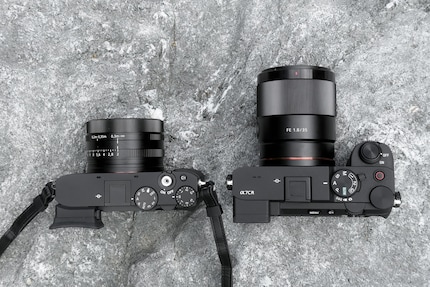
In a nutshell
Expensive but excellent grab-and-go camera
The Sony RX1R III is for the few, not the many. It excels as a luxury grab-and-go camera for when money’s no object, rather than as a tool. If you’re part of that target group, you’ll love the RX1R III. Everyone else will probably shake their heads in disbelief at the camera’s price tag and limitations.
What makes the RX1R III so special is its combination of lightness, image quality, lens speed and fantastic autofocus. While its relatively outdated Zeiss lens can only satisfy the sensor resolution in the centre of the image with the aperture open, this rarely poses a problem during day-to-day use. I can’t say the same for the fixed LCD, poor viewfinder and lack of image stabilisation.
The extent to which these trade-offs will bother you will depend on your specific situation. All in all, this camera’s a better fit for me than competitor models. Every comparable one is either too heavy for me to wear around my neck or fails to bring anything more to the table than my phone camera. The RX1R III has the edge in both of those areas. It’s just a shame Sony charges top dollar for it.
Pro
- Small and lightweight
- Excellent image quality
- Fast lens
- Top-notch autofocus
- User-friendly
- Very well made
Contra
- Unfair price
- No image stabilisation
- Fixed display
- Subpar viewfinder
- Lens could do with being sharper
My fingerprint often changes so drastically that my MacBook doesn't recognise it anymore. The reason? If I'm not clinging to a monitor or camera, I'm probably clinging to a rockface by the tips of my fingers.
